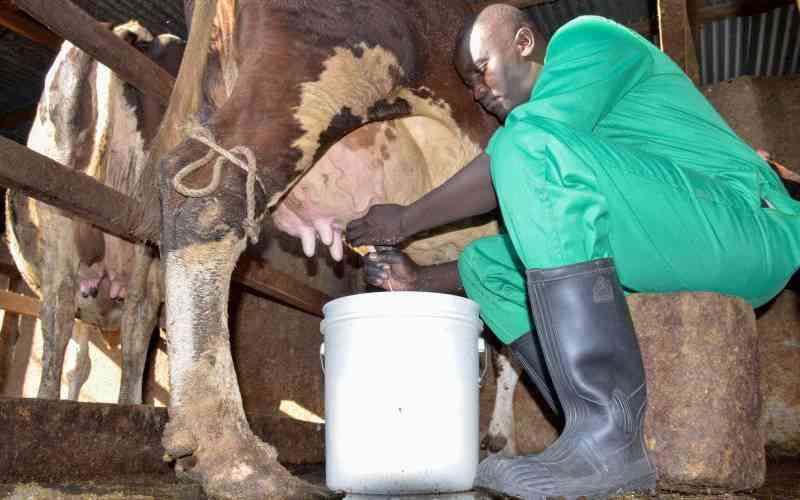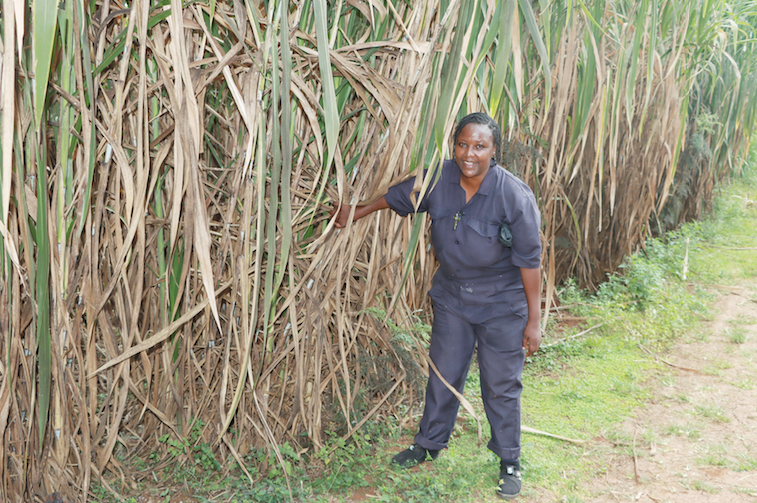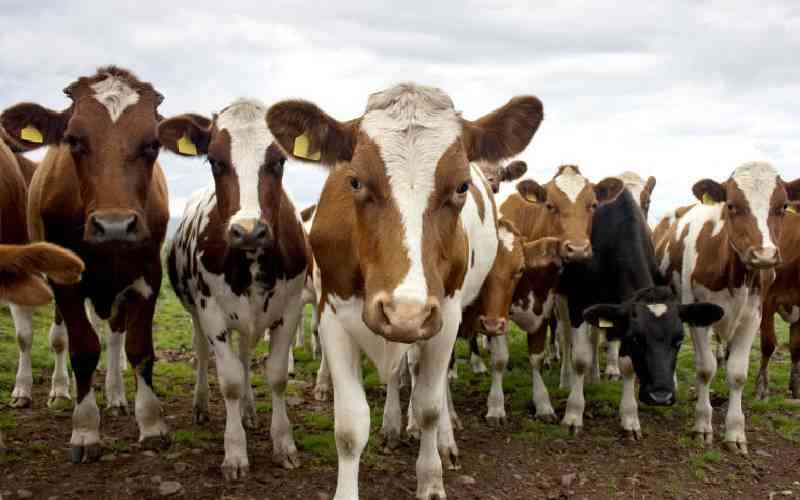Most counties, especially those not known for commercial dairy production have put a lot of effort in promoting dairy farming. Bungoma, Homa Bay, Siaya and Kakamega counties, among others, have done well in promoting milk production by supporting farmers to acquire dairy animals, this is a laudable effort. Commercial dairy production has many advantages – it improves household nutrition and serves as a reliable source of income.
Counties are in competition to be milk sufficient and to have more milk means to keep a critical number of good milk-producing cows. Selected model farmers in these counties have received dairy animals. However, without proper livestock disease management, such worthy ventures can easily go down the drain.
Some of these farmers who have kept indigenous cattle, which are relatively resistant to East Coast Fever (ECF) and other tick-borne diseases, are now keeping crosses of exotic dairy animals. I hold my breath every time I see these pricey animals grazing on the roadside along zebus! This puts them at risk of contracting ECF but some of these farmers are oblivious of this grave risk, pointing to the importance of induction into dairy farming before being given the animals.
Ticks and tsetse flies are important livestock disease vectors. Ticks are a countrywide problem, while 38 out of 47 counties are tsetse infested. This is to say the diseases spread by these vectors are a problem that counties need to consider when developing dairy production improvement plans. Although there are many other diseases spread by ticks, I have picked on ECF and trypanosomiasis or nagana, which is mainly spread by tsetse flies.
Single vaccination
East Coast Fever is a deadly tick-borne disease. Luckily, it can be prevented through a single vaccination that confers immunity to the animal for life. Now that is good news but this news should find its rightful place in counties supporting farmers to acquire dairy animals.
Trypanosomiasis is also a fatal disease and has two forms, one that kills the animal very fast and a second one that takes a prolonged course, tormenting the animal through emaciation, reduced milk production, abortions and low traction power. These diseases therefore pose a great challenge to dairy production in these counties.
ECF can be prevented through tick control. This is especially effective where animals are reared under zero grazing but remains a challenge to most farmers in neighbourhoods where tick control is inadequate or lacking.
The development of the vaccine against ECF was a milestone in livestock production but the vaccine is yet to be adopted optimally by farmers. Losing an animal worth hundreds of thousands of shillings to a disease that can be prevented with a single jab worth Sh1,500 doesn’t make economic sense.
County governments should be involved in ECF control because the vaccine comes in doses of 40. Individual farmers are currently grouping themselves into groups of 40 and then calling a qualified vet to administer the vaccine, this has however sometimes presented a great challenge.
On the other hand, this life-saving intervention can be done by county governments at the point of purchase or distribution of the dairy cows to farmers.
While ECF has a vaccine, there is currently no vaccine for Trypanosomiasis or nagana, hence the adage ‘prevention is better than cure’ holds. Tsetse flies are the main vectors for nagana; there is currently a continental campaign to eradicate tsetse flies from Africa and Kenya has made strides towards this through the Kenya Tsetse and Trypanosomiasis Eradication Council (KENTTEC).
These efforts could be fast tracked if the county governments prioritised tsetse eradication activities in their annual budgets. The involvement of counties is critical because tsetse eradication is done through an area-wide well coordinated approach that should take into consideration shared county borders.
-Dr Othieno is the Vet of the Year Award winner 2016, he works with the Kenya Tsetse and Trypanosomiasis Eradication Council (KENTTEC)
Stay informed. Subscribe to our newsletter
 The Standard Group Plc is a
multi-media organization with investments in media platforms spanning newspaper
print operations, television, radio broadcasting, digital and online services. The
Standard Group is recognized as a leading multi-media house in Kenya with a key
influence in matters of national and international interest.
The Standard Group Plc is a
multi-media organization with investments in media platforms spanning newspaper
print operations, television, radio broadcasting, digital and online services. The
Standard Group is recognized as a leading multi-media house in Kenya with a key
influence in matters of national and international interest.
 The Standard Group Plc is a
multi-media organization with investments in media platforms spanning newspaper
print operations, television, radio broadcasting, digital and online services. The
Standard Group is recognized as a leading multi-media house in Kenya with a key
influence in matters of national and international interest.
The Standard Group Plc is a
multi-media organization with investments in media platforms spanning newspaper
print operations, television, radio broadcasting, digital and online services. The
Standard Group is recognized as a leading multi-media house in Kenya with a key
influence in matters of national and international interest.








